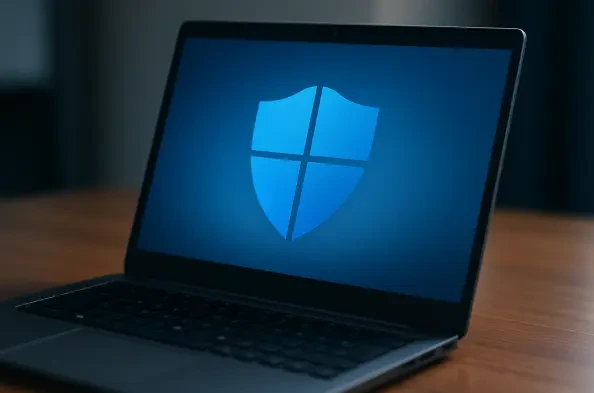In an era where cyber threats lurk around every digital corner, the question of whether a dedicated third-party antivirus program is truly essential has become a hot topic among tech enthusiasts and everyday users alike. With malware growing more sophisticated and system resources often stretched thin by bloated security software, many are turning a critical eye toward built-in tools like Windows Defender. This exploration delves into a compelling personal account of someone who abandoned third-party antivirus solutions, only to discover a surprising sense of security with the native protections of their operating system. It’s a narrative that challenges conventional wisdom, urging a closer examination of what genuinely safeguards devices in today’s threat landscape. As the debate unfolds, the focus shifts to whether modern built-in security can stand alone or if additional layers remain a necessity for comprehensive protection.
Reevaluating Antivirus Necessity
Built-In Security: A New Era
Windows Defender’s Evolution
The transformation of Windows Defender from a rudimentary add-on to a formidable security tool marks a significant shift in how built-in protections are perceived. Once dismissed as inadequate during its early iterations, this native solution has undergone substantial upgrades, integrating advanced features like cloud-based machine learning and real-time threat detection. Independent evaluations, such as those from AV-TEST, consistently award it near-perfect scores for protection, placing it on par with many premium alternatives. This evolution reflects a broader trend in operating systems taking greater responsibility for user safety, reducing the perceived need for external software. For many, the question now is not whether Windows Defender can protect, but how effectively it does so compared to paid options that once dominated the market. The continuous updates and seamless integration with the Windows environment further solidify its position as a serious contender in the security space.
Performance Comparison
When stacking Windows Defender against third-party antivirus programs, the comparison often reveals surprising results that challenge long-standing assumptions. Many paid solutions, while feature-rich, come with a noticeable performance cost, slowing down boot times and consuming significant system resources during scans. In contrast, Windows Defender operates with a lighter footprint, leveraging its deep integration with the operating system to minimize impact on daily tasks. Independent testing shows that its detection rates for malware and phishing attempts frequently match or even exceed those of well-known premium suites. This balance of efficiency and effectiveness prompts a reevaluation of whether the additional bells and whistles of paid software justify their resource demands. For users prioritizing speed alongside security, the built-in tool presents a compelling case, often delivering robust protection without the drag associated with external programs.
Risks of Third-Party Tools
System Drag and Annoyances
One of the most frequent complaints about third-party antivirus software centers on its tendency to bog down system performance, turning routine tasks into frustrating ordeals. Users often report sluggishness during full system scans, with delays in opening applications or browsing the web becoming all too common. Beyond mere slowdowns, the barrage of pop-up notifications and prompts for upgrades can erode patience, creating an intrusive experience that detracts from usability. These distractions not only hinder productivity but also risk desensitizing users to critical alerts, as constant warnings blend into background noise. The cumulative effect paints a picture of security tools that, while intending to protect, sometimes compromise the very systems they aim to defend through sheer annoyance and resource strain. This has led many to question whether the trade-off for supposed extra protection is worth the daily inconvenience.
Increased Attack Surface
Beyond performance issues, a more insidious concern with third-party antivirus programs lies in their potential to expand a system’s vulnerability to attacks. These tools often require deep access to core system functions to operate effectively, a necessity that can inadvertently open new avenues for exploitation by savvy cybercriminals. Historical instances have shown that flaws in antivirus software can be targeted, turning a protective layer into a gateway for malware. This irony underscores a critical flaw in the logic of adding more security software: each additional program with privileged access increases the attack surface. For users, this raises a sobering consideration about whether the very solutions marketed as shields might instead act as weak points in their digital armor. The balance between added protection and added risk becomes a pivotal factor in deciding whether to rely solely on built-in defenses.
Modern Threats and User Responsibility
Changing Nature of Malware
Beyond Traditional Detection
The landscape of cyber threats has shifted dramatically, with modern malware often sidestepping traditional detection methods that rely on known signatures. Fileless attacks and script-based threats, for instance, blend seamlessly into legitimate processes, rendering older antivirus approaches less effective. This evolution demands a more adaptive response, one that prioritizes heuristic analysis and behavioral monitoring over static databases of known threats. Windows Defender has adapted to this reality by incorporating machine learning and cloud-driven intelligence, enabling it to identify suspicious patterns even in the absence of predefined signatures. This proactive stance offers a significant advantage in a world where threats are increasingly dynamic and elusive. As malware continues to innovate, the ability of security tools to evolve alongside them becomes a defining factor in their relevance and reliability.
Dynamic Security Needs
Addressing today’s cyber threats requires a departure from static defenses toward more fluid, intelligent systems capable of anticipating rather than merely reacting to attacks. The integration of real-time threat intelligence and automated response mechanisms in tools like Windows Defender reflects this shift, providing a level of agility that older third-party solutions sometimes lack. These modern approaches focus on detecting anomalies in system behavior, a method better suited to uncovering hidden or novel malware strains. This adaptability is crucial as attackers continuously refine their tactics to exploit emerging vulnerabilities. For users, understanding that security needs are not static but ever-changing can guide decisions about which tools best align with current risks. The emphasis on dynamic protection highlights why built-in solutions, frequently updated by their developers, might offer a more sustainable defense against the unpredictable nature of digital threats.
Power of User Behavior
Safe Habits Over Software
While security software plays a vital role, the significance of user behavior in maintaining a safe digital environment cannot be overstated. Simple practices, such as avoiding downloads from unverified sources or scrutinizing email attachments before opening them, often provide a stronger defense than any additional program. A cautious approach to online interactions can prevent many threats from ever reaching a point where software intervention is necessary. This mindset shift, from relying solely on technology to embracing personal accountability, empowers users to take control of their security. Education about phishing scams and safe browsing habits further reinforces this proactive stance, reducing the likelihood of falling victim to common attack vectors. Ultimately, cultivating vigilance and skepticism toward unsolicited digital content may prove more effective than layering on extra antivirus tools.
Security Fatigue Risks
An often-overlooked downside of antivirus software is the phenomenon of security fatigue, where incessant alerts and warnings dull a user’s sensitivity to genuine threats. When notifications pop up with alarming frequency, distinguishing between critical issues and trivial updates becomes a challenge, leading to potential oversight of real dangers. Removing such software, or at least minimizing its intrusive elements, can paradoxically heighten awareness by eliminating the noise that clouds judgment. This clarity allows users to focus on meaningful security practices rather than being overwhelmed by constant prompts. The risk of becoming desensitized underscores a subtle but significant drawback of overzealous security tools, suggesting that a streamlined approach might better serve user attentiveness. Stripping away distractions could thus refine instincts, fostering a more discerning approach to identifying and responding to potential risks online.
Personalizing Your Security Approach
Tailored Needs and Solutions
Assessing Individual Requirements
Recognizing that not all users share identical security needs is fundamental to making informed decisions about antivirus solutions. For casual internet users engaging primarily in low-risk activities like browsing trusted sites, Windows Defender often provides ample protection without the overhead of additional software. However, individuals with more complex requirements—such as managing sensitive data or requiring robust parental controls—might find value in the expanded features of premium suites. These often include extras like virtual private networks or identity theft monitoring, which address specific vulnerabilities beyond basic malware defense. Evaluating personal or professional demands helps clarify whether built-in tools suffice or if specialized functionalities justify the investment in third-party options. This tailored assessment ensures that security measures align with actual risks rather than adopting a one-size-fits-all mindset.
Balancing Features and Simplicity
Striking a balance between comprehensive protection and system simplicity remains a key consideration when choosing between built-in and third-party security solutions. While premium antivirus packages bundle numerous features, their complexity can overwhelm users who prioritize ease of use and minimal interference. Windows Defender, by contrast, offers a straightforward interface and automatic updates, appealing to those who prefer a hands-off approach. Yet, for environments demanding advanced safeguards—think businesses or households with multiple users—the additional tools provided by paid software might prove indispensable. Deciding on the right path involves weighing the desire for simplicity against the necessity of specific protections not covered by native options. This balance ensures that security setups enhance rather than complicate digital experiences, aligning with both technical needs and user preferences for a seamless computing environment.
Reflecting on Security Choices
Looking back, the journey of reevaluating antivirus needs revealed critical insights into the evolving nature of digital protection. The surprising adequacy of Windows Defender for many users, coupled with the pitfalls of third-party tools like performance drag and security fatigue, shifted perspectives on what constitutes effective defense. The realization that user behavior often outweighed software solutions in preventing threats marked a turning point in understanding true safety. Moving forward, the focus should rest on personalized assessments, ensuring that security choices match individual lifestyles and risk profiles. Exploring built-in tools as a primary shield, while remaining open to specialized features for unique needs, offers a practical path. This balanced approach, grounded in both technology and personal responsibility, paves the way for smarter, more sustainable protection strategies in an ever-changing cyber landscape.






